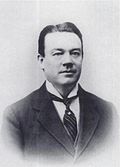| |||||||||||||||||||||||||||||||||||||||||||||||||
All 52 seats to the House of Commons of Northern Ireland 27 seats were needed for a majority | |||||||||||||||||||||||||||||||||||||||||||||||||
|---|---|---|---|---|---|---|---|---|---|---|---|---|---|---|---|---|---|---|---|---|---|---|---|---|---|---|---|---|---|---|---|---|---|---|---|---|---|---|---|---|---|---|---|---|---|---|---|---|---|
| |||||||||||||||||||||||||||||||||||||||||||||||||
 Election results by constituency | |||||||||||||||||||||||||||||||||||||||||||||||||
| |||||||||||||||||||||||||||||||||||||||||||||||||
This article includes a list of references, related reading, or external links, but its sources remain unclear because it lacks inline citations .(June 2025) |
| (1921–72) |
The 1933 Northern Ireland general election was held on 30 November 1933. Like all previous elections to the Parliament of Northern Ireland, it produced a large majority for the Ulster Unionist Party.
Contents
33 of the 52 MPs (63%) were elected unopposed, the largest number in the history of the House of Commons. The vast majority of those elected without a contest were Ulster Unionists.


